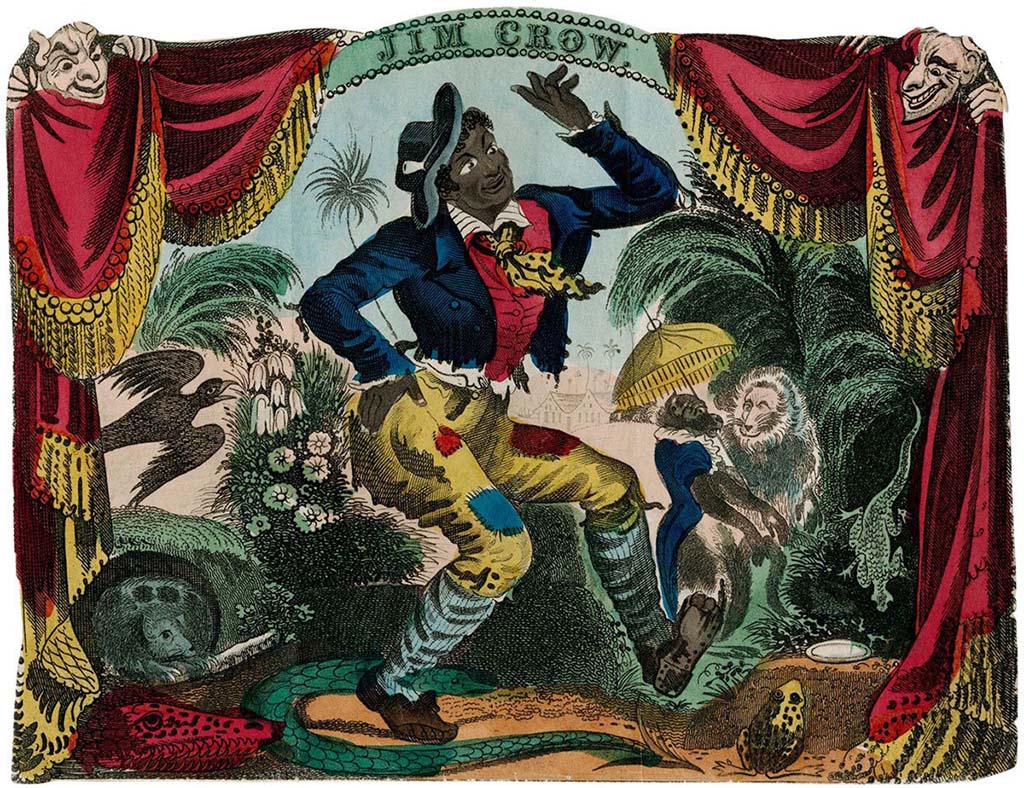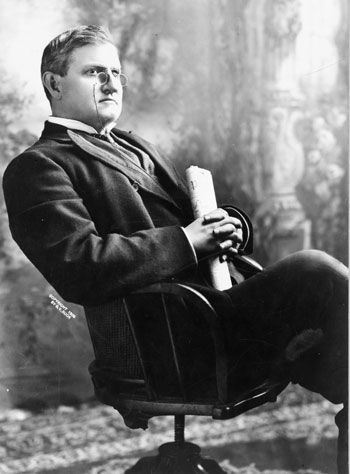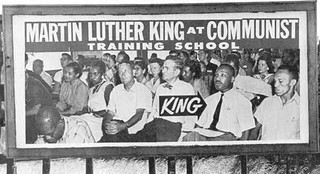Author's Preface: This is a resubmission of an essay published on Identity Dixie in early 2022. While it is mostly intact, an additional reference has been added to the bibliography and much more has been expanded upon in the Christian section as well as a few edits to the history section. I would also like to clarify that the uses of "Japhetic race," "Japhethites," "Dixians," and "Southerners" are synonymous with "Caucasian" and "White."
“And hath made of one blood all nations of men for to dwell on all the face of the earth, and hath determined the times before appointed, and the bounds of their habitation.”
Acts 17:26, KJV
The foremost artificial sin Dixie remains guilty of committing stands as the Jim Crow era. While Antebellum slavery receives unremitting condemnation, Southern segregation holds the crown jewel of Dixian sins, often painted as the nadir of race relations in North America. Very little apologetics were written in defense of Jim Crow, unlike the Antebellum South and the Confederate cause, and even the most ardent of pro-Southern and neo-Confederate sympathizers often refuse to address the era, going so far as to even adopt the current neo-abolitionist historiography. Aside from American historians, and the media, waxing poetically about the struggles of the Civil Rights movement and its leaders’ fight against systemic racism in Dixie during the 1950s and 1960s, many Southerners simply lack the intestinal fortitude to address the fallacies within the leftist narrative or to seek vindication of the Southern segregationists of old, despite those segregationists often comprising the brunt of the utmost superlative statesmen Dixie produced following the War Between the States. However, upon further research, it is quite possible, though difficult in many respects, to find a number of buried sources in which segregation is defended and justified. This essay will seek to provide a legal, social, and Christian justification for and explanation of how Jim Crow laws produced a superior society for both Caucasian and Negro Southerners, as well as, discussing the means through which they may be used to reform contemporary Southern society.
To give pretext to this extensive topic, a bit of history is required. The origin of Jim Crow Laws are murkier and less clear than commonly purported. Whereas a handful of instances which occurred allow for the pinpointing of the Jim Crow era’s official, or de jure, beginning, confusion mires the questions of “why” and “how” it began, a far more convoluted origin than the simplistic neo-abolitionist view of history.
Segregation began de facto in some areas during Reconstruction. On a case-by-case basis, Radicals sought to forcibly integrate numerous areas, and Lowland Southerners’ intimate, paternalistic pre-War lifestyles allowed for a greater degree of social interaction between the races. However, that paternalism did not prevent Southerners from holding the same social beliefs as they had prior to 1865; additionally, poor Whites assiduously disliked interactions with Negroes. All classes of Whites loathed living under Radical and Negro rule, with the former oppressing Southerners and engaging in superfluous corruption and the latter committing wonton crime, as well as, flocking to abrasive militia organizations.20,21
With the Compromise of 1877 came the end of Reconstruction and the ousting of the Republican regime. The Redeemer Democrats often ran on pro-White platforms and promises of restoring social order. While these promises won them control of Dixie at this time, only a few, including Governors Wade Hampton III of South Carolina and Francis Nicholls of Louisiana, actually upheld their promises and led generally unobjectionable gubernatorial tenures, concentrated primarily in the first few years after Reconstruction’s end.20 Order was quickly restored, but the Democrats were no longer constituted of the same preeminent folk which constituted the Jacksonian, and few remaining Jeffersonian, Democrats of antebellum yore. The Southern aristocracy had been rendered all but extinct by the War Between the States’ end due to exile, destruction of their plantations and property, death from starvation and illness, without children because of their sons’ service in the Confederate military or their daughters falling victim to collateral damage, and the ravages of military invasion and occupation. The replacements to these men were often second sons, businessmen, lawyers, middle managers, and other second-rate individuals, failing to bear the torch of leadership their predecessors had done. This dominant faction of the Southern Democrats came to be known as the “conservatives” and “Bourbons.”4,21
This new generation of Southern politicians were more business oriented than the Planters, focusing on industry, railroads, urban expansion, and financial gains to the detriment of the still mostly rural Southern population. Taking this into account, it was quite beneficial for them politically to make claims of supporting Negroes, who began moving to urban areas following their emancipation. All but excommunicating working-class Whites from the base of the Democratic Party, conservatives cast aside the demographic they utilized to Redeem Dixie and began to cater to Freedmen. This created an interesting social dichotomy with three primary philosophies which competed against each other in the 1880s and 1890s.20,21

De facto segregation ebbed and flowed following Reconstruction. Multiple philosophies formed to address the race issue. Conservatives were moderates and often promoted social policies of paternalism, often via ostentatious means and consisted of a few of the remaining Planters as well as new upper classes of Whites. There was a faction of liberal Whites who believed in the absolute idea of Negro suffrage and equity among the races and spread across all socio-economic classes. Lastly were the hardline racialists, or segregationists, and were typically constituted of the aforementioned rural, working-class Whites.20
The belligerent feelings between these factions catalyzed during the 1880s, as the original Redeemer governors began leaving office. At approximately the same point, the indigent rural population grew weary of the corruption brewing within the conservative Democratic ruling faction, and they opted to form various populist Farmer’s Alliances, ultimately creating the Populist Party. Drawing in poor Whites and Negroes, the Populists worked diligently to unify the two races and quell animosity between the two demographics which historically loathed each other and directly competed with each other in correlation with a series of devastating depressions which hit throughout the 1880s and 1890s. However, this was all for naught. The Populist Party in the South collapsed earlier than its counterparts in the West due to infighting and the conservatives’ strategic use of Negro votes to crush upstarting White populists.20
Yet, the conservatives failed to firmly grasp the reins of power indefinitely. These depressions, rising corruption, circumvention of White votes, and neglect of rural interests would be their undoing and weaken them severely, especially as the Negroes became more apathetic towards voting. Segregationist populists and left-wing populists continued to strengthen, encroach upon the conservatives’ power, and successfully takeover swathes of the Southern Democratic Party; consequently, conservatives were left standing at a fork in the road. 19,20
Whether capitulating so as to preserve what power they still held or being voted out of office entirely, the conservatives gave in, state-by-state, to the tidal wave of de jure Jim Crowism spreading across Dixie. In 1890, Governor John Marshall Stone, a former Confederate officer serving his second non-consecutive term whose first term was that of Mississippi’s Redeemer governor, presided over the ratification of the new Mississippi Jim Crow constitution. Beginning the movement known as the 2nd Mississippi Plan, segregationist constitutions and laws as a means of voting restriction began slowly manifesting in the South until 1896. These constitutions introduced poll taxes, literacy tests, and residential requirements. Ultimately, these prerequisites negatively effected many of the poor rural Caucasians and populists. They would finally seize the reins of power at the polls and begin an era of populist success upon the South’s adoption of White primaries between 1896 and 1906.19,20,21
Also in 1890, Benjamin Tillman seized the reins of power in South Carolina and became the Palmetto State’s governor. The former Confederate soldier was a firebrand mouthpiece of White agrarian populism, and Tillman spearheaded a vicious campaign against the South Carolina conservatives, loathing them for casting him aside after he led the Red Shirts to win Wade Hampton’s III governorship in the 1876 gubernatorial election. Tillman and his successor John Gary Evans pushed for and successfully presided over a new Jim Crow South Carolina constitution in 1895. The uproar caused by its ratification brought a case to the Supreme Court, the infamous Plessy v. Ferguson, in 1896 after which a slew of Jim Crow constitutions were drafted and ratified from then until 1910. The era of de jure Jim Crowism had truly begun, with the additional factor that White populism became a mainstay of Southern politics. According to Mississippi Governor James Vardaman, in 1890 a member of the Mississippi Constitutional Convention, “There is no use to equivocate or lie about the matter…. Mississippi’s constitutional convention of 1890 was held for no other purpose than to eliminate the nigger from politics. Not the ‘ignorant and vicious’, as some of the apologists would have you believe, but the nigger…. Let the world know it just as it is…. In Mississippi we have in our constitution legislated against the racial peculiarities of the Negro…. When that device fails, we will resort to something else.” This statement, along with his catering to the White working class in Mississippi throughout his political career in the Mississippi House of Representative, governorship, and U.S. Senate, and the later governorships of Theodore Bilbo in Mississippi and Tillman and Evans in South Carolina, only serve to solidify the patent fact that segregation formed as a product of the woes of the White working class and not a means of rich White Southerners to suppress Negro votes, as is often commonly claimed.20,21

Public segregation developed separately but concurrently. While a bit muddier to pinpoint due to the intimate nature between the paternalistic upper class Caucasians and the lowly Negroes, legal public segregation began in 1890 with the Louisiana Separate Car Act. This very piece of state legislation is what resulted in the infamous Plessy v. Ferguson Supreme Court case which solidified de jure public segregation as a mainstay of Southern social life.21
Having established the caliginous background of the laws, the Jim Crow era violated nothing within the constitutional framework and easily held the status of legal justification. Multitudinous works, book and essay, presented and expounded upon this argument throughout the 20th century, only being suppressed and swept away by modern historians. Simply stated, the Jim Crow laws complied with America’s constitutional framework. Jim Crow required a poll tax and literacy in order to vote, effectively disqualifying a majority of Negroes and many poor Whites. However, this did not restrict voting based on racial status, adhering to the regulations established in the 15th Amendment; Congress simply passed the Voting Rights Act of 1965 anyway. Social segregation was further dismantled via malicious misinterpretation of the 14th Amendment in the Brown v Board of Education decision, the Civil Rights Act of 1964, and the Fair Housing Act of 1968, none of which actually held any constitutional validity upon inspection of the amendments in question. The last of the landmark Civil Rights bills came about in 1968, with the Fair Housing Act, preventing Whites from setting up their own communities and towns in direct violation of the 1st Amendment’s guarantee of freedom of association.2,15,18
The segregationists vehemently asserted the claim that communist factions, or sympathizers, fomented, catalyzed, and financed integration. In this they were not wrong, often utilizing the argument as a primary means of context and giving further validity to the arguments utilized in this essay.1,11,14,17,18 According to Herman Talmadge, the NAACP, Southern Regional Council, Southern Negro Youth Conference, and other such organizations teemed with communists. In his book, You and Segregation, Talmadge listed Dr. George S. Mitchell, Paul Robeson, James E. Jackson Jr., Howard Fast, Dr. Max Yergen, and Louis Burnham as a few notable examples. Dr. Mitchell was affiliated with the Southern Conference for Human Welfare, a notorious communist front group prosecuted by the House unAmerican Activities Committee, and which worked extensively with the NAACP prior to the former’s disbandment in 1948. Also, Louis Burnham was at one point the organizational secretary of SNYC while also the vice president of American Youth for Democracy, also known as the Young Communist League.18 Furthermore, the Left has even admitted to and praised communists’ involvement in the Civil Rights movement, in some cases even giving them credit for starting it.5,12,13

Being fully within the legal bounds of the United States Constitution, the social benefits of the era are easily quantifiable. The social implications, and subsequent consequences, of integration were dire and overturned a multi-generational establishment of customs. The fallout from these tyrannical, communist, anti-Christian, anti-Southern pieces of legislation carried with it the permanent degradation and destruction of American, and especially Southern, society in both the short term and long term. The Civil Rights legislation of 1964,1965, and 1968 as well as the Brown v. Board ruling and Lyndon Johnson’s Great Society welfare program utterly decimated Negro communities. Now in direct competition with all Whites, Negroes found themselves and their businesses collapsing when confronted with the new White markets, and welfare expansion crushed any incentive they once held for work ethic and familial stability. Furthermore, the Fair Housing Act of 1968 caused the mass phenomenon known as “White Flight” to drain cities and townships of financial stability in order to recreate all White communities they no longer could legally have. Southern cities quickly collapsed thereafter and became consumed with crime.6,8,9,10 Lastly, the Immigration Act of 1965 created the scenario of Negroes having to directly compete with the unremitting flow of Hispanic immigrants into America, forcing the former into a position of competition on all fronts in the trades and agricultural fields they once thrived in. Even Herman Talmadge lamented the collapse in employment of Negro school teachers following the Brown v. Board ruling.18
The effect these political moves imposed on White Southerners carried an even greater reprehensible nature. No longer legally allowed to maintain their own clubs, schools, communities, or even politics, Southern Whites’ relationship with the Negroes soured immensely. Since the politics Whites controlled became tainted with the votes of lesser qualified, malicious groups brainwashed with communistic delusions of grandeur, Southern politicians turned on their own kinfolk after a generation, engaging in a modern Reconstruction which has not ceased since the 1990s. With no positive political representation, difficulty in residing within Southern cities, and a relentless assault on Southern culture and history within the education system and media, as well as, increasing rates of miscegenation, Southerners’ future appears quite bleak.
As a brief note, industrialization of Dixie arose concurrently and correlated with integrationist movements of the 1950s and 1960s. Urban life never truly benefitted the Negroes. As with integration of the labor force, urbanity placed Negroes in direct competition with Whites, and the latter generally responded with hostility. Blacks usually thrived more comfortably in rural areas, in agricultural work, and in trade skills. Urban industrial work brought with it associations with communist groups, modernized promises of “40 acres and a mule,” and the false hope of Civil Rights activism, none of which brought positive change to the Negro life. Robert Penn Warren discussed the negatives of industrial living for blacks, emphasizing the positives of rural living and their thriving within agricultural and trade work.3 This phenomenon remains an overlooked aspect of Negro history and neglected discussion of the negative consequences of their movement from rural to urban environments.
A cursory assessment of Jim Crow illuminates the fact numerous, if not most, segregationists utilized the Holy Bible to support their claims, a prime example being Mississippi Governor Ross Barnett’s status as a Baptist Sunday School teacher and who brazenly said, “The Good Lord was the original segregationist. He put the black man in Africa. He made us White because He wanted us White, and He intended that we should stay that way.”1,7,16 Pastors, mostly Baptist, Methodist, and Presbyterian, frequently railed against integration. One of the more famous sermons delivered on racial integration was titled “God: The Original Segregationist” and was written and preached by Reverend Carey Danial of West Dallas, Texas in 1954. Bob Jones Sr., the founder of Bob Jones University in South Carolina, was a recalcitrant segregationist and famously delivered a radio broadcast sermon in 1960 titled “Is Segregation Scriptural?” in opposition to integration. Further inquiry proves their beliefs true. Utilizing multiple verses and passages, Jim Crowism patently fails to fit within the modern accusations of Southern sins. The Old Testament remains filled to the brim with verses and laws discussing the separation of the Hebrews from other peoples, the New Testament discusses in Acts 17:26 how the Lord separated human groups into different homelands, and Revelation 7:9 describes John’s vision of countless unique nations and languages standing before God’s throne. Revelation also details the antichrist’s goal to establish a one world government with a one world language, flying in the face of modern, open border, miscegenation pursuing globalism. Leviticus 19:19 uses cattle, seeds, and cloth metaphorical as a means of condemning race-mixing. Genesis 10:5, in a similar fashion to that of Acts 17:26, says, “By these were the isles of the Gentiles divided in their lands; every one after his tongue, after their families, in their nations.” Ezra 9:1-7 displays an extreme grievance at the behest of the author towards intermarriage, and Zechariah 9:6 as well as Deuteronomy 28 both describe mixing as a curse. The Samaritans were a cursed people and were often viewed as such. They were the product of God’s punishment of the ancient Hebrews who were taken into bondage and slavery due to disobedience. Despite Christ’s parable of the Good Samaritan, at no point in the story does he refute this fact; they were the direct product of God’s judgement and wrath. Furthermore, is it wise to breed with cursed people’s, such as the modern Japhethites choosing to breed with the modern Hamites? Remember, 1 John 2:15-17 says, “15 Love not the world, neither the things that are in the world. If any man love the world, the love of the Father is not in him. 16 For all that is in the world, the lust of the flesh, and the lust of the eyes, and the pride of life, is not of the Father, but is of the world. 17 And the world passeth away, and the lust thereof: but he that doeth the will of God abideth for ever.” Also, John 15:19 reads, “If ye were of the world, the world would love his own: but because ye are not of the world, but I have chosen you out of the world, therefore the world hateth you.” Mixing is a modern, worldly trend, and it is mentally bereft to accept that God approves of the systematic extermination of the Japhetic race at the behest of evil Western leadership.
However, the most damning piece of evidence opposed to integration and amalgamation of the races exists in Genesis 11, in the very first book of the Holy Bible. This passage gravely chronicles the story of the Tower of Babel. In this bit of Biblical history, God deliberately separated the humans living within that ancient metropolitan city so as to prevent them from creating a singular language, culture, and nation, disobeying His command to spread throughout Earth and multiply within their own lands. At no point in Christ’s ministry or in the Great Commission does the Bible purport the idea of endless mixing and destruction of cultures but to spread the Gospel to all peoples, two very different ideas. While most verses quoted on this topic are usually pulled from the Old Testament, James 1:17, Hebrews 13:8, Numbers 23:19, Malachi 3:6, and other passages make it abundantly clear God does not change. Jesus Christ stated in Matthew 5:17, “Think not that I am come to destroy the law, or the prophets: I am not come to destroy, but to fulfil.” He did not nullify the Old Testament but instead fulfilled and vindicated its very reason for existence. It is indescribably foolish to ascribe and create sins that do not exist within the Bible. It is also quite asinine to believe a supermajority of Christians who lived prior to the Civil Rights Movement of the mid 20th Century were actually incorrect and not true Christians to begin with. This is an arrogant and prideful belief catalyzed among churches and church people more concerned with the comings and goings of the world than that of the scriptures. The segregationists were more than biblically justified.

With Jim Crowism extinguished and its true history shrouded in lies compounded on some of its flaws, it may appear jarring to a contemporary reader to endorse the idea that current developments necessitate its partial return. Blending the elements of Jim Crowism and paternalism contains the potential for wholly positive social reformations. Though this section is largely based on predictions, idealism, and conjecture, it is not unreasonable to introduce some ideas of old segregationism into contemporary circumstances. Firstly, it is paramount to acknowledge racial differences and race relations today. Lower than they have ever been since the Civil Rights movement, it would possibly be a worthwhile idea to allow more freedom of association, allowing for differing demographics to purposefully choose which schools they enroll in, which businesses they frequent, which employees they hire, which customers they sell to, which individuals allowed into private clubs and fraternities, and which neighborhoods they live in based on racial and religious factors. This, of course, would come with the caveat of fair economic opportunities and political participation. Regarding political representation, removing the poll tax was an asininely bad move. While a poll tax per se is not necessary, providing proof of paying taxes would solve numerous issues with rooting out reprehensible characters from office and is an increasingly popular idea not uncommonly heard in public political discussions among the Southern populace. This would allow for more “voting for the person” as opposed to belligerently “voting for the party.” Lastly, focusing more so on populist policies in favor of the working and middle classes, particularly the available pipelines between the two, and social morality as opposed to focusing on political parties and racial issues would further mend relations between competing factions. These policies would not be difficult to implement and only require a modicum of common sense.
A long, arduous, and tumultuous nature often characterizes the Jim Crow era, yet in depth research of its policies and history contradict these descriptors. Upon inspection of the legal, social, and Biblical arguments, as well as the circumstances of each, of Jim Crowism only vindicates its previous implementation. The impenitent loathing contemporary society holds for such an era stems from the lies sold to it and the opposition it holds to delving deeply into its history, often prevented from encountering said history due to the suppression of sources. Understanding of segregationism and adopting a handful of its ideas opens the possibility for adopting solutions to the present irrational, preposterous social qualms which, if previously handled correctly, may not even have catalyzed.
Bibliography
- Bilbo, Theodore G. Take Your Choice: Separation or Mongrelization. Ostara Publications, 2018.
- Bloch, Charles Julian. States’ Rights: The Law of the Land. Harrison Co.: Atlanta, 1958.
- Warren, Robert P. “The Briar Patch.” In I’ll Take My Stand: The South and the Agrarian Tradition, 246-264. Baton Rouge: Louisiana State University Press, 2006.
- Fleming, Walter L. Civil War and Reconstruction in Alabama. New York City, NY: Columbia University Press, 1905.
- Greene, Robert. “The Lost History of Southern Communism.” The Nation. Last modified June 8, 2020. Accessed February 15, 2022. https://www.thenation.com/article/politics/red-black-white-alabama-communist-party-mary-stanton/.
- Hampton, Robert. “The Great Replacement: Jackson, Mississippi.” American Renaissance. Last modified July 6, 2021. Accessed February 19, 2022. https://www.amren.com/commentary/2021/07/the-great-replacement-jackson-mississippi/.
- Henry, Mickey. Dr. Morton H. Smith: The Racial Problem Facing America. Last modified March 16, 2014. Accessed January 30, 2022. https://tribaltheocrat.com/2014/03/dr-morton-h-smith-the-racial-problem-facing-america/.
- Hood, Gregory, Henry Wolff, and Paul Kersey. “The Great Replacement: Birmingham.” American Renaissance. Last modified August 25, 2020. Accessed February 19, 2022. https://www.amren.com/blog/2020/03/birmingham-after-desegregation/.
- Hood, Gregory. “The Great Replacement: Baltimore.” American Renaissance. Last modified August 25, 2020. Accessed February 19, 2022. https://www.amren.com/blog/2020/08/the-great-replacement-baltimore/.
- ———. “The Great Replacement: Richmond.” American Renaissance. Last modified August 25, 2020. Accessed February 19, 2022. https://www.amren.com/blog/2020/07/the-great-replacement-richmond/.
- Martin, Michael. “Strom Thurmond, the ‘Dixiecrats,” and Southern Identity.” Abbeville Institute. Last modified August 21, 2019. Accessed January 30, 2022. https://www.abbevilleinstitute.org/strom-thurmond-the-dixiecrats-and-southern-identity/.
- Martin, Michel. “How ‘Communism’ Brought Racial Equality to the South.” NPR. NPR, February 16, 2010. Last modified February 16, 2010. Accessed February 15, 2022. https://www.npr.org/templates/story/story.php?storyId=123771194.
- Oster, Grant. “The Communist Party and the Civil Rights Movement.” Hankering for History. Last modified September 10, 2013. Accessed February 15, 2022. https://hankeringforhistory.com/the-communist-party-and-the-civil-rights-movement/.
- “Platform of the States’ Rights Democratic Party.” Platform of the States Rights Democratic Party | The American Presidency Project. Last modified August 14, 1948. Accessed January 30, 2022. https://www.presidency.ucsb.edu/documents/platform-the-states-rights-democratic-party.
- Putnam, Carleton. Race and Reason: A Yankee View. Ostara Publications, 2014.
- Reynolds, Thorin. “A Christian View on Segregation.” In Faith and Heritage: A Christian Nationalist Anthology, 159-164. Antelope Hill Publications, 2021.
- “Segregationists: Equal Justice Initiative.” Segregation in America. Accessed January 30, 2022. https://segregationinamerica.eji.org/segregationists.
- Talmadge, Herman E. You and Segregation. Birmingham, AL: Vulcan Press, Inc., 1955.
- Trotter, Jack. “The Strange Career of Segregation.” Abbeville Institute. Last modified April 1, 2020. Accessed January 30, 2022. https://www.abbevilleinstitute.org/the-strange-career-of-segregation/.
- Woodward, C. Vann, and William S. McFeely. The Strange Career of Jim Crow. Oxford: Oxford University Press, 2002.
- Woodward, C. Vann. Origins of the New South: 1877-1913. Edited by Charles B. Dew, Wendell Holmes Stephenson, and E. Merton Coulter. Baton Rouge, LA: Louisiana State University Press, 1971.
Other essays of mine regarding these, or similar, topics:
The “Old” New South and the Early Jim Crow Era: 1877 – 1913
The Last Gasp of Southern Nationalism
The Strange Career of the American Negro
“The White people of the South are the greatest minority in this nation. They deserve consideration and understanding instead of the persecution of twisted propaganda.” –Strom Thurmond






Another great essay Sir.
I wish I could find the time and Strength to write an article on the subject of Capitalist/communists taking over the lower orders and making a hysterical killing mob out of them, destroying order altogether and taking over the people and their possessions, and subsequently controlling labor and resources.
It has played out like that in Europe, to the Southern U.S, Russia, China, Mexico, the list goes on.
These social engineers are still flooding the United States with their “huddled masses” to this day.
How could heritage Americans of all stripes not see this game?. Here’s a quote from the book ‘No God next door’ by Kenney 1935 that I think sums it up well.
“….Their gangsterism is labeled liberalism; their agrarian brigandage is peon emancipation; their state swindling is national finance, their communism is concentrated capitalism; (think cbdc, social credit score etc.) their free education is compulsory de-Christianization; and their freedom of thought is atheism gone totalitarian….”.
Jim Crow laws are testimony on how the South was kept from being completely destroyed by these nation wreckers.
God Save the South!
.
Thank you. I’m glad you enjoyed it.
GREAT Joe Wasp.Right up my alley.I loved it and will be re-reading it several times as well as the other essays and sources.Its so uplifting to see our kinsmen and the way they took things in hand no matter the obstacles.It is depressing to see just the events of today and how far we have fallen so your article is refreshing.In Heaven we shall see these great people and the South shall be recreated there(minus the beasts such as Jews and Negroids).What an enjoyment and a boost.I thank you and I ask that God bless and protect you.Between T.Morris,Tom and your article I have been in high cotton lately.What a good bunch and I’m thankful for you all and all the great writers and commenters here.All deserve a salute.
Thank you for reading and enjoying.